-
Posts
2,719 -
Joined
-
Last visited
Content Type
Profiles
Forums
Downloads
Posts posted by ASEAN NOW News
-
-

TODAY file photo A screen on a mobile phone showing ride-hailing services and charges for taxis and private-hire cars.
SINGAPORE — A fall in the number of taxi and private-hire car drivers, along with a steep pick-up in demand for such transport, have caused fares to surge for these services recently.
According to a Today report, Transport Minister S Iswaran said on Monday (Aug 1) that since January 2020, the number of active taxi and private-hire car drivers has dropped by 18 per cent to about 57,000 drivers as of June this year.
The Covid-19 pandemic and the resulting semi-lockdown and work-from-home arrangements had lowered demand for point-to-point transport, which included taxis and private-hire cars.
This was even though the Government had set aside more than S$530 million for support measures such as the Covid-19 Driver Relief Fund and the Special Relief Fund, Mr Iswaran said.
He was giving a written reply to questions filed by Member of Parliament Saktiandi Supaat of Bishan-Toa Payoh Group Representation Constituency, regarding the causes of recent booking difficulties and price surges of private-hire cars and taxis.
Mr Iswaran noted, though, that demand for point-to-point services has “picked up sharply” after infection controls were eased for the community in March and April this year, including the “reopening of international borders and the return of all employees to workplaces”.
Daily point-to-point trips had risen by 30,000 in June compared to February.
“However, the number of point-to-point drivers has not increased as rapidly as demand, and this has resulted in fare surges and booking difficulties,” Mr Iswaran explained.
“Like other sectors, the point-to-point sector will require time to adjust to the surge in demand after Covid-19 restrictions were lifted.”
He noted that there are “signs that the market is responding.”
Vocational licence applications have increased recently, for instance, and drivers who left the sector may progressively return in response to the higher demand, which will help boost the supply of point-to-point drivers in the upcoming months.
To Mr Saktiandi’s question on whether the Government will consider liberalising regulations that now limit private motor cars to two paid carpooling trips a day, Mr Iswaran said that they will remain unchanged.
“Carpool trips are incidental and non-commercial in nature, and this remains the case today. As private car owners typically take two trips a day — to and from home — the current regulatory regime allows private car owners to charge at cost-recovery basis for up to two trips a day."
“We have no plans to change this limit as existing avenues, such as the point-to-point framework, are in place for drivers to provide ride-sharing services that are commercial in nature.”
-

Firefighters use a fire ladder to approach a blaze that broke out on the sixth floor of a karaoke parlor in Hanoi's Cau Giay District, August 1, 2022. Photo by VnExpress/Pham Chieu
Three firefighters died while trying to extinguish a fire that broke out at a 6-story karaoke parlor on Quan Hoa Street in Hanoi's Cau Giay District Monday afternoon.
According to VN Express, at 1 p.m., a fire broke out on the sixth floor of the Isis 231 karaoke parlor on Quan Hoa Street.
The building is about 3.5 m wide and more than 20 m long, with a billboard and an exit iron staircase outside.
Although the parlor has been temporarily closed for repairs, employees report to work every day.
Hundreds of officers were dispatched by the Rescue Information Center, along with dozens of firefighters and ladder trucks and water trucks.
The firefighters were divided into three teams, one of which entered the building through the main door to search for people and bring them out to safety.
Another team used the ladder truck up to break a small glass door on the side of the building as well as the corrugated iron roof. The third team kept spraying water in front of the building.
However, due to the building's closed structure and many soundproof devices that easily fire, the blaze grew stronger and stronger.
Smoke billowed up from the parlor's broken glass doors and gap in the roof.
At 3:28 p.m., authorities announced the deaths of three firefighters from the Cau Giay District Police's Fire Prevention and Fighting Team.
The three were identified as Dang Anh Quan, the captain, and two others, Do Duc Viet, and Nguyen Dinh Phuc.
They had reached the fourth floor when the ceiling collapsed on them. The three firefighters’ bodies were retrieved an hour later.
A section of Quan Hoa Street was closed off as the blaze was being fought.
Deputy Minister of Public Security Nguyen Van Long, Vice Chairman of Hanoi City Le Hong Son and Major General Nguyen Anh Tuan, director of the Fire Prevention and Rescue Police Department, visited the scene.
The fire was completely extinguished by 6:45 p.m., and firefighters and fire trucks were withdrawn.
An investigation has been launched into the tragedy.
Preliminary information is that the fire was started by a welding machine being used to repair the parlor.
In November 2016, a karaoke parlor on Tran Thai Tong Street in Hanoi's Cau Giay District had caught fire, killing 13 people. It took the authorities six hours to extinguish the fire and evacuate the victims.
Fire breaks out at a karaoke parlor on Quan Hoa Street, Cau Giay District, Hanoi, August 1, 2022. Video by VnExpress/The Quynh
Join our 3 x a week Vietnam News, Travel and Expat information newsletter and keep up to date. https://aseannow.com/newsletter.php
-

The new Vietnamese passport which comes into effect July 1, 2022. Photo by VnExpress/Nick M.
Spain has followed Germany in denying visas to holders of Vietnam's new passports because it lacks information on the passport holder’s place of birth reported VN Express.
"The new passport does not show the bearer's place of birth. This is important information for personal identification and is also required for processing visa applications to the Schengen countries," the Spanish Embassy in Vietnam announced Monday.
The 26 Schengen countries have abolished internal border controls, allowing free movement between member states. Schengen visa holders are allowed to stay in the countries of the bloc for up to 90 days in each semi-annual cycle.
Spanish authorities are coordinating with other member states in the Schengen area to technically analyse Vietnam's new passport, the embassy said.
It added that until the competent central authorities in the Schengen area make a decision on whether to accept the new passport with dark blue cover, the embassy won't accept Schengen visa applications from Vietnamese citizens with the new passport.
Schengen visa applications with a previous valid Vietnamese passport (green cover) showing the place of birth will still be received and processed by the embassy normally.
Those who intend to enter Schengen member countries should contact the representative offices of those countries to confirm the relevant information, to avoid difficulties in completing immigration procedures at the border between the countries, the Spanish embassy recommended.
The decision to deny visas for the new passports was made by Spain nearly a week after the German Embassy in Vietnam announced that it would stop issuing visas for new Vietnamese passports for the same reason.
A representative of the Immigration Department, Ministry of Public Security affirmed a few days ago that Vietnam's new passport model complies with international regulations and practices and issues that arise will be prioritized for handling through diplomatic channels.
Vietnam's new passport, with decorations on its pages and covers, has been in use since July 1 this year.
The old, green cover passports will continue to be valid till they expire.
Join our 3 x a week Vietnam News, Travel and Expat information newsletter and keep up to date. https://aseannow.com/newsletter.php
-

BID FOR GUINNESS. Pangasinense Jojo Bigay trains in preparation for his bid for the Guinness World Records for fastest backward running. The bid will happen in December this year. (Photo courtesy of Jojo Bigay)
MALASIQUI, Pangasinan – A 53-year-old Pangasinense will attempt to set a Guinness World Records for backward running this December.
In a phone interview on Monday, Alfonso “Jojo” Bigay said the Guinness Book of World Records has accepted his application to beat the world record for fastest run backward 100 and 200-meter male category.
“There is a go-signal from Guinness. It will probably happen this December at the Narciso Ramos Sports and Civic Center (NRSCC) oval area in Lingayen town, Pangasinan,” he said.
Bigay said he targets to beat the 13.6 seconds in 100 meters by Germany’s Roland Wegner and 30.99 seconds in 200 meters by Spain’s Christian Rodriguez.
“I wanted to prove that Filipinos can excel in the field of track events where height is might by breaking the existing Guinness backward running world record,” he said.
Bigay was set for the bid last December but he was injured while training.Nonetheless, Bigay is continuing with his training to achieve his goal.
“I am regularly training at the beachfront and at the NRSCC. I also do stationary bike backpedaling, skip rope, and many more.
My sport doesn’t get that much attention because it is not popular but I want to do this to bring honor and pride to our province and the country as well. I thank my sponsors today for believing in me and my goal,” he said.
He appealed to Pangasineses for moral support as their presence and cheers will keep his adrenaline up to beat the world record.
Meanwhile, Bigay encouraged the youths to try his backward running sport, which is twice beneficial as the usual running sport.
Bigay started as a track runner before he became a backward runner in 1991. (PNA)
Join our 3 x a week Philippines News, Travel and Expat information newsletter and keep up to date. https://aseannow.com/newsletter.php
-

(File photo)
MANILA – Oil companies announced adjustments on prices of liquefied petroleum gas (LPG) and petroleum products at the start of August.
Petron said it cut LPG prices by PHP2.05 per kilogram and PHP1.15 per liter for AutoLPG. Petron’s price rollback started at 12:01 a.m. on Monday.
“These reflect the international contract price of LPG for the month of August,” Petron said.
Eastern Petroleum also said it will slash Eastern EC Gas LPG by PHP1.70 per kilogram.
With the rollback, prices of regular 11-kilogram LPG decreased by PHP18.70 to PHP22.55 this month.
LPG prices have gone down for four consecutive months.
Meanwhile, oil firms will adjust fuel prices starting Tuesday morning.
Cleanfuel, Eastern Petroleum, Petro Gazz, Seaoil and Shell said they will roll back diesel prices by PHP0.60 per liter and will implement an increase of PHP0.75 per liter for gasoline products.
Seaoil and Shell will also slash kerosene prices by PHP0.75 per liter.
Other oil industry players are expected to follow suit. (PNA)
Join our 3 x a week Philippines News, Travel and Expat information newsletter and keep up to date. https://aseannow.com/newsletter.php
-

DAMAGED. The magnitude 7 quake left huge cracks in the centuries old Tayum Church in Abra on Wednesday (July 27, 2022). Completed in 1803, the church is considered a national cultural treasure, being the oldest and largest in the Cordillera region. (Contributed photo)
MANILA – The Department of Tourism (DOT) has reported severe damage to cultural and heritage sites in several parts of northern Luzon following the powerful 7.0 magnitude earthquake that rocked Abra on July 27.
In a statement sent Wednesday night, Tourism Secretary Christina Frasco ordered DOT's regional offices and the Tourism Infrastructure Enterprise Zone Authority (TIEZA) to extend possible assistance to affected stakeholders and tourism establishments.
Based on initial reports, at least two churches that had been declared “National Cultural Treasure” by the National Museum of the Philippines were affected by the tremor while several heritage and ancestral houses sustained notable damage.
“We will request TIEZA to prioritize assessment of the cultural treasures affected by the recent earthquake recognizing the need to protect and sustain our heritage and cultural treasures for the benefit and welfare of our future generations,” Frasco said.
The DOT has so far recorded damage in the following tourist destinations:
Abra
- Sta. Catalina de Alexandria Church, a 19th-century baroque church and declared a National Cultural Treasure by the National Museum of the Philippines in 2001.
- San Lorenzo Ruiz Shrine (heavily damaged), one of the oldest churches in Abra.
Baguio City
- Minor cracks in Lafayette Luxury Suites Hotel and Crown Legacy buildings
Ilocos Sur
- Vigan Cathedral
- Syquia House, an ancestral home turned museum in Vigan
- Hotel Linda
- Heritage and ancestral houses along the Vigan Heritage Village
- Bantay Bell Tower in Bantay, Ilocos Sur
- St. John The Baptist Church in San Juan, Ilocos Sur
Multiple ground faulting was likewise seen in the Santa Ana Beach Area, a favorite tourist spot among visitors.
The agency said two TIEZA properties also sustained damage.
The riprap and ceiling of the Banaue Hotel and Youth Hostel in Ifugao partially caved in while Mt. Data Hotel's ceiling in the fireplace and lobby area collapsed, prompting TIEZA to cancel all bookings in both hotels until a thorough assessment has been undertaken.
“My concern and sympathy are one with those who have been affected by the recent earthquake in Northern Luzon. The Department will extend whatever help it can to tourism stakeholders and establishments that have been directly affected by this incident. I have requested the DOT Regional offices in Northern Luzon to continue with the assessment of the extent of the damage and to immediately submit the report for our appropriate actions and assistance,” Frasco said.
“Our resilience as a nation has already been tried and tested in the past. I am certain that this can be strengthened by the essential collaboration between our national agencies, local governments, and crucial stakeholders as we conquer our challenges,” she added.
No tourists were reported harmed but those with travel plans to the Northern Luzon area are advised to practice extra precautions. (PNA)
Join our 3 x a week Philippines News, Travel and Expat information newsletter and keep up to date. https://aseannow.com/newsletter.php
-
Last week we reported that several lawmakers in the House of Representatives had discussed the need for the immediate passage of a measure seeking to establish a Department of Disaster Resilience (DDR) to manage the country's disaster preparedness, response, and rehabilitation efforts.

Luzon earthquake photo
This discussion was prompted by the recent magnitude 7 quake that hit Abra, and nearby areas.
However, it begs belief that the members of the House of Representatives are even having to consider such a move especially since the country has been affected in the past 12 months by two major natural catastrophes.
A more science-based approach to disaster resilience
Davao City Representative Paolo Duterte, Benguet Rep. Eric Yap, Quezon City Rep. Ralph Tulfo, ACT-CIS Partylist Reps. Edvic Yap, Jocelyn Tulfo and Jeffrey Soriano, meanwhile, pushed for House Bill No. 452 that aims to create the DDR.
The bill seeks to create an “empowered, highly specialized, science and information and communications technology (ICT)-based and fast and responsive Department of Disaster Resilience, with the clear unity of command which shall be primarily responsible for ensuring safe, adaptive and disaster-resilient communities.”
“We should emphasize the science-based aspect of this proposal. With the Philippines among the countries most vulnerable to the destructive effects of climate change, science and technology should play a key role in helping us prepare for possible disasters,” the lawmakers said.
Under the measure, the DDR shall manage and direct the implementation of national, local, and community-based disaster resilience and disaster management programs, projects, and activities in collaboration with relevant government agencies, local government units (LGUs), civil society organizations, academic groups, and other stakeholders.
Duterte said their proposed measure includes the establishment of a National Disaster Operations Center (NDOC), Alternative Command and Control Centers (ACCCs) in the regions and the Disaster Resilience Research and Training Institute (DRRTI).
The bill also proposes to establish evacuation centers in every city and municipality that would offer accommodation for people who have been displaced from their homes due to natural or man-made disasters.
These are all fine words by the country's politicians, but will there be any positive action?
Insurance fund set up
Southeast Asia is one of the most hazard-prone regions in Asia and the Pacific.
The region suffered $91 billion in financial losses in 2004–2014 from the impacts of typhoons, storm surges, floods, drought, and earthquakes.
Southeast Asia’s poor and vulnerable are also the ones most likely to be adversely affected when disasters strike.
The Integrated Disaster Risk Management (IDRM) Fund set up in 2013 supported the Philippines in designing the world’s first city disaster insurance pool, covering earthquakes and typhoons.
The insurance pool was carefully structured to address the need for rapid access to early recovery financing post-disaster. Other countries in Southeast Asia have shown interest in replicating the city disaster insurance pool.
Insurance for microfinance institutions against extreme weather events was also evaluated in Myanmar, providing a design for a not-for-profit contingent disaster liquidity facility that allows microfinance institutions to provide loans, with near-zero interest rates, to disaster-affected clients.
Why so late?

Minivan escapes earth tremors last week
Of course, we all know that the Philippines is prone to these disasters annually due to its location in the area.
So why does the government even need to discuss setting up a Disaster Dept instead of having to rely on various government and provincial authorities along with the Philippine forces and police to manger these catastrophes?
Let’s hope they have learnt their lesson since the Luzon quake and fast track this desperately need Disaster Department to get the green light asap.
Join our 3 x a week Philippines News, Travel and Expat information newsletter and keep up to date. https://aseannow.com/newsletter.php
-

Travellers walk through a transit hall at Changi Airport in Singapore on May 13, 2022. (Photo: AFP/Roslan Rahman)
SINGAPORE: Air passenger traffic in Singapore reached 50.3 per cent of its pre-pandemic level in June, said Changi Airport Group (CAG), amid a return in demand for travel reports CNA.
Changi Airport managed 2.93 million passenger movements in June, compared with 5.8 million in June 2019, according to Changi Airport's latest operating indicators on Sunday (Jul 31).
Aircraft movements - including both landings and takeoffs - totaled 18,400, or about 58.6 per cent of pre-pandemic levels in the same month in 2019, said CAG.
Airfreight throughput registered 163,000 tons for the month, a 1.4 per cent increase year-on-year.
"We are encouraged by the steady increase in passenger traffic as it is a sign that we are getting back on the trajectory of growth towards pre-pandemic levels," said Lim Ching Kiat, managing director for Air Hub Development at CAG.
"The reopening of Terminal 4 and partial opening of Terminal 2 will give us the capacity to support our airline partners’ efforts in restarting services and launching new routes, which are critical for us to capture post-pandemic demand for air travel."
Strong recovery
Total passenger traffic from April to June this year was 7.33 million - 43.6 per cent of pre-COVID-19 levels, and 14 times compared to the same period last year.
Aircraft movements clocked 50,500 in the same period, reaching 53.5 per cent of pre-COVID-19 levels, and a 96.8 per cent year-on-year increase.
For the second quarter of the year, airfreight movements decreased slightly year-on-year by 1.4 per cent to 469,000 tons.
According to CAG, this was due to supply chain disruptions arising from COVID-19 lockdowns in China, as well as geopolitical tensions impacting air cargo traffic, particularly during April and May.
The top five air cargo markets for the quarter were China, Hong Kong, Australia, United States of America, and Japan.
-

JUPITER CABLE. Local and provincial government officials from Daet, Camarines Norte pose with executives of PLDT-Smart during the inauguration of the Jupiter Cable System landing station in the town on July 12, 2022. The cable system has been fired up since Friday (July 29, 2022) and is seen to boost the country's international data capacity and image as an investment destination. (Photo courtesy of PLDT)
MANILA – The newest international cable system in the Philippines went officially online after PLDT launched the system on Friday.
In a statement, PLDT said the Jupiter Cable system has been “fired up” and is seen to “immensely boost” the country’s international data capacity and advance digital infrastructure.
“The 14,000-km. Jupiter Cable system is the newest international gateway connecting the Philippines directly from PLDT’s cable landing station in Daet, Camarines Norte to Japan and the US West Coast,” it said.
The cable system, it said, would triple PLDT’s international capacity to 60 Terabits per second and is seen to be especially useful since a bulk of Internet content and services accessed by Filipinos are from servers in the US and Japan.
“The capacity offered by Jupiter is expected to help promote the Philippines to global hyper scalers and position the country as the new digital hub in the Asia-Pacific,” the statement added.
“Hyper scalers” are usually cloud service providers that use hyper-scale computing, an agile method of processing data that can quickly go up and down depending on data traffic.
This computing method can be used in data centers and the cloud to accommodate fluctuating demand.
By increasing the country’s international data capacity, it said the Jupiter cable would enhance the country’s image as an investment destination.
The cable system was launched in a celebration at the Marriott Hotel in Pasay City, led by PLDT chairperson Manuel Pangilinan. Among the guests were Information and Communications Technology Secretary Ivan John Uy, Trade and Industry Secretary Alfredo Pascual, Japan Ambassador Koshikawa Kazuhiko, and US Ambassador MaryKay Loss Carlson.
To date, PLDT has access to 15 international submarine cable networks and wants to expand further with two more – the Asia Direct Cable and the APRICOT cable system, both expected to be completed in the next two years. (PNA)
Join our 3 x a week Philippines News, Travel and Expat information newsletter and keep up to date. https://aseannow.com/newsletter.php
-

(DILG Philippines photo)
MANILA – The number of families affected by the magnitude 7 earthquake that struck Abra and nearby Northern Luzon areas on July 27 has climbed to 82,336 which is equivalent to 314,161 persons, the National Disaster Risk Reduction and Management Council (NDRRMC) said on Sunday.
The NDRRMC said the number is higher than the 62,024 families recorded on Saturday.
The affected families are residents of 996 barangays in Regions 1 (Ilocos), 2 (Cagayan Valley), and the Cordillera Administrative Region (CAR).
Being aided and sheltered in the now 42 activated evacuation centers are 1,113 families or 3,891 persons with the remainder sheltering with relatives and friends.
The NDRRMC also confirmed that nine persons were killed by the earthquake in the CAR while 357 others were injured -- 355 in the CAR and two in Region 2.
The agency also said that it is still validating reports of one death and 18 injured residents in Region 1.
Houses damaged were placed 21,890 and these were reported in Ilocos, Cagayan Valley, CAR and National Capital Region (NCR).
Classified as "partially damaged" were 21,588 houses and while 302 were described as "totally damaged".
Damage to infrastructure has reached PHP414.2 million and these were recorded in Ilocos, Cagayan Valley, Central Luzon, CAR, and the NCR.
Meanwhile, the National Irrigation Authority reported PHP4.5 million worth of damage to irrigation systems in the CAR while PHP13.96 million worth of agriculture equipment and machinery were also damaged by the earthquake. (PNA)
Join our 3 x a week Philippines News, Travel and Expat information newsletter and keep up to date. https://aseannow.com/newsletter.php
-

Fidel V. Ramos, 12th President of the Philippines (March 18, 1928 - July 31, 2022) (Photo courtesy of Official Gazette)
MANILA – Former president Fidel V. Ramos has died at the age of 94.
The Office of the Press Secretary expressed condolences to the family of Ramos, the country’s 12 Chief Executive from 1992 to 1998.
“It is with great sorrow that we learn of the passing of former President Fidel V. Ramos. He leaves behind a colorful legacy and a secure place in history for his participation in the momentous changes of our country, both as military officer and chief executive. We deeply condole with his family, friends, classmates and associates and keep him in our prayers,” Press Secretary Trixie Cruz-Angeles said in a statement.
The Philippine National Police (PNP) also mourned Ramos’ passing.
“The nation lost a great leader. We are one with our compatriots in expressing our deepest condolences to the family of the former president,” Brig. Gen. Roderick Alba, PNP public information office chief, said in another statement.
Alba said Ramos will be remembered for his “valuable contribution into improving the lives of the Filipinos.”
“More than being a military leader and a government official, he served as a good example to humanity through his incomparable wisdom and deeds,” he added.
"Fidel Valdez Ramos was a resolute political leader and a friend of the EU (European Union) under whose term the EU-Philippines relations deepened. FVR was a pillar of democracy and peacebuilding and an icon of the EDSA power revolution,” posted the European Union in the Philippines on Facebook.
On March 18, the FVR Legacy Initiative launched the planned virtual library in celebration of Ramos’ 94th birthday.
Some Cabinet officials of the Ramos administration gave a preview of the online “FVR Presidential Library,” the first and only online presidential library so far in the country.
The virtual library will serve as a repository of FVR lectures and addresses, books, photographs, key memorabilia, and documents.
During his first years as president, he addressed the power shortage he inherited from the previous administration.
He also resuscitated the economy by inviting foreign companies to invest in the Philippines.
Peacemaker
It was during his incumbency that the Philippine government signed the historic peace agreement with the Moro National Liberation Front on Sept. 2, 1996.
Sec. Carlito G. Galvez Jr., Presidential Adviser on Peace, Reconciliation and Unity, said Ramos was instrumental in laying the foundations of the comprehensive peace process.
“Under his administration, the government launched a nationwide consultation process in order to develop a strategy to engage various rebel groups in the country,” he said.
The Ramos administration created the National Unification Commission (NUC), which was primarily tasked to craft "a viable general amnesty program and process that will lead to a just, comprehensive and lasting peace," Galvez said.
The recommendations gathered from the NUC-led consultations served as inputs in crafting the Six Paths to Peace, which eventually became the framework of the peace process.
The Office of the Presidential Adviser on the Peace Process (now the Office of the Presidential Adviser on Peace, Reconciliation and Unity) was created in 1993 to implement the recommendations made by the NUC.
“It was during the term of President Ramos that government peace negotiating panels with the communist insurgents, military rebels, and the Moro groups were established. These peace panels would be crucial in moving forward the peace talks with the rebel organizations,” Galvez said.
The Philippines is moving closer to realizing its vision of achieving a just and lasting peace "because of the man we will always lovingly refer to as FVR," Galvez said.
"May you find eternal peace in the hands of our Lord, Sir. You will be missed and will always be remembered by the Filipino nation for everything that you have done for our country," he said.
Prior to the presidency, Ramos was the chief of the then-Philippine Constabulary (now Philippine National Police), Chief of Staff of the Armed Forces of the Philippines, and Secretary of the National Defense.
(With a report from Lloyd Caliwan/PNA)
Join our 3 x a week Philippines News, Travel and Expat information newsletter and keep up to date. https://aseannow.com/newsletter.php
-
People work at a textile factory in HCMC. Photo by VnExpress/Quynh Tran
After six months of post-Covid economic recovery, Ho Chi Minh City factories face material and order shortages, forcing them to downsize or reduce working hours, affecting staff's incomes reports VN Express.
For the past month, Nguyen Thi Thuy Dung, 32, a worker at Datalogic Vietnam, an Italian manufacturer of automated data collection equipment and software, has only been allowed to work 48 hours a week with no overtime. Because workers at the factory work six-hour shifts, at two shifts a day, it means Dung was only allowed to work four days a week.
"Without overtime pay, my income was cut by over 30 percent," Dung said.
As a single parent, she had to adjust the family's budget. Nevertheless, she felt lucky to still be able to receive financial support from her company.
After 11 years of working nonstop, she also felt it was the right time for her to wind down and spend more time taking care of her 13-year-old son.
Nguyen Thuy Van, 23, did not feel so comfortable.
Working at a company that manufactures electrical products in the HCMC's hi-tech area, Van was caught in a downsizing after the company failed to make as many sales as it did in the past.
"The company has good benefits and I wanted to stay for the long run, so I was shocked to hear the news,"
she said.
Workers who are part of the downsizing can only work eight hours a day with no overtime allowed.
Some decided to quit and look for another job.
"Last month I only got VND6 million ($257.07), a VND3 million reduction from the previous month," she said, adding she's been looking for a new job.
For now, she decided to stay until her contract expires and hopes for a settlement.
Dang Van Chung, general director of Datalogic Vietnam, said orders are coming in frequently post-Covid, but the firm lacks components to manufacture certain products.
"It is the same for most electric component manufacturers. We simply don't have enough component supplies to meet demands," he said, citing this as the reason work hours have to be cut.
To make ends meet, the company agreed to buy components at higher prices to ensure a stable supply and complete orders.
Components can be brought from those who stored them before the pandemic broke out, or even from the black market.
Even amid a lack of components, Chung said the company would try to ensure that every worker gets to work at least 48 hours a week.
It will not fire workers and continue to maintain support policies as it waits for the market to recover.
Forced days off
The textile industry has it tough as well since the number of orders dwindles, forcing factories to let workers take alternate days off.
Tran Thi Tuyet Mai, deputy general secretary of the Vietnam Textile and Apparel Association (Vitas), said businesses used to have many orders but few workers in the beginning of this year.
In the second quarter, when the war in Ukraine broke out, along with oil price hikes and other factors, people's buying habits started to change on a global scale. Brands began to reduce their order numbers, meaning factories had to make workers take days off.
Nguyen Huu Tuan, HR director of the Thanh Cong textile and commerce company in Tan Phu District's Tan Binh industrial complex, said there would be an order shortage in September and October.
A high number of workers would have to stay off work and the factory would shut down for about eight days, coinciding with the National Day holiday (September 1-4). After that, workers would take days off alternately.
The change in working schedule is expected to cut workers' salary by 10-20 percent, he said.
Tuan said many businesses with weak finances would not be able to last until the end of the year, especially amid a lack of orders and soaring prices. Workers losing jobs would be inevitable, he added.
Despite all their financial difficulties, Thanh Cong still retains support polices, including pay raises for workers as it awaits market recovery.
Tran Viet Anh, deputy chairperson of the HCMC Union of Business Association, said several fields are suffering from lower purchasing power among main markets like America and Europe.
"There are many leftover products in several factories. There are discounts, but still no one buys them," he said, adding that impacts of the pandemic, an ongoing war and inflation are being felt.
Some businesses with strong financial backing will stockpile resources and wait for market conditions to improve. Still, there will be few new jobs for workers.
Viet Anh said reduced incomes may make workers seek new jobs, and once the market finally recovers, factories will once again face a worker shortage.
"This is a difficult talent-retaining challenge."
Join our 3 x a week Vietnam News, Travel and Expat information newsletter and keep up to date. https://aseannow.com/newsletter.php
-
Days since the electronic toll collection (ETC) system was applied, the HCMC – Long Thanh – Dau Giay Expressway has been experiencing severe traffic congestion reports VN Express.
Only Saturday five days since investor Vietnam Expressway Corporation put the ETC system into use, traffic became congested in both directions.
While authorities blamed the gridlock on many cars stopping in the emergency lane to get the ETC card, it could be seen that many cars still had to pay with cash after the card failed to work.
The expressway section near Long Thanh Bridge crossing the Xoai Rap River, a tributary of the Dong Nai River and the Long Phuoc toll gate, saw the heaviest congestion.
It took drivers more than 15 minutes to get through a section of less than 2 km from the Long Thanh Bridge to the Long Phuoc toll gate.
Long lines of cars and trucks going from Dong Nai to HCMC lined up at the toll gates.
An ambulance was among the vehicles stuck in an extensive line inching forward or not moving at all.
"Normally it takes me no more than an hour and a half to travel from Dong Nai to HCMC, but it has been more than three hours and I have not even reached the city," said driver Nguyen Van Trung, 33.
Cars stopped in an emergency lane to get the ETC card. The HCMC – Long Thanh – Dau Giay is the first expressway in southern Vietnam to apply the ETC system.
Vietnam will have all expressways use the ETC system starting Aug. 1.
There were several toll gates along the expressway that remained open to have staff collect toll fees in person in case the ETC card did not work.
The 55km, four-lane HCMC – Long Thanh – Dau Giay Expressway cost VND20.6 trillion ($882.6 million) to build.
It was used by 45,000-50,000 vehicles daily in 2019, often causing gridlocks in certain sections since its designed daily capacity is around 44,000 vehicles.
According to an approved plan, the expressway will be expanded to eight lanes to catch up with increasing travel demand once the Long Thanh International Airport in Dong Nai Province, set to be the country’s largest airport, begins operations.
Join our 3 x a week Vietnam News, Travel and Expat information newsletter and keep up to date. https://aseannow.com/newsletter.php
-
We published a news item today that the Ministry of Industry and Trade wants coal-fired plants with a capacity of 14,120 megawatts scrapped from electricity production plans for Vietnam to achieve net-zero emissions by 2050.
The plants were included in Power Development Plan 7 (for 2011-20) and have not been built due to delays.
Now, the ministry does not want them to be part of Power Development Plan 8 (for 2021-30), which is being drafted.
The ministry also wants to reduce the ratio of coal-fired power sources from 25-31 percent in 2030 to around 10 percent in 2045.
No new coal-fired plant should be built after 2030, it said.
It wants to increase output from LNG-fueled and renewable plants to offset the cut in coal use.
It targets having 12,000-15,000 MW of renewables and 14,000 MW of liquefied natural gas plants in PDP 8.

Mong Duong plant
No with the global panic about rising temperatures it begs belief that Vietnam would even be considering creating more coal-fired plants.
With countries like the Philippines getting more assistance from South Korea to build nuclear plants for its energy, why is the Ministry of Industry and Trade even discussing future energy from coal?
Korea Hydro and Nuclear Power Co. Ltd (KHNP) is the largest power generator in Korea, producing one-third or around 28 percent of Korea’s domestic demand for power through a combination of nuclear power, hydropower, pumped-storage power, and new and renewable energy.
It is also an energy partner of 29 countries for the global power supply.
Surely Vietnam’s ministers should be flying to Seoul as soon as possible to get in line to work with KHNP too.
Join our 3 x a week Vietnam News, Travel and Expat information newsletter and keep up to date. https://aseannow.com/newsletter.php
-

file photo
SINGAPORE: Singapore Airlines (SIA) announced a first-quarter net profit of S$370 million, it said on Thursday (Jul 28), after a fourteen percent increase in passenger traffic year on year thanks to an easing of COVID-19 travel restrictions.
According to CNA, the figure was a major improvement from the S$409 million loss in the first quarter a year earlier when more than two-thirds of its revenue was from cargo.
SIA Group's latest operating results showed that its two airlines - SIA and Scoot - carried a total of 5.1 million passengers in the first quarter, up 158.2 per cent from the previous quarter.
SIA's revenue tripled to S$3.9 billion in the three months to Jun 30 and its quarterly operating profit of S$556 million was the second highest in the company's history.
The airline has been ramping up capacity from its Singapore hub and expects to reach about 81 per cent of pre-pandemic levels by the end of December, up from 61 per cent in the June quarter.
"Travel demand is expected to remain robust in the near term as we head into the year-end holiday travel period, with forward sales staying buoyant for the next three months up to October 2022," SIA said in a statement.
Revenue per available seat kilometre, a measure combining airfares and the percentage of seats filled, reached a record peak at its full-service airline during the June quarter, the carrier said.
Travel demand has rebounded strongly in all regions except East Asia, where rules remain stricter than most of the world.
SIA, however, said inflationary pressures including elevated fuel prices remain a concern.
"Interest rate hikes and slowing economic growth in many countries around the world, including the SIA Group's key markets, are risk factors to passenger travel recovery and air cargo demand," the airline said.
SIA reported an operating cash surplus of S$1.48 billion during the first quarter.
Passenger capacity is expected to reach 68 percent of pre-pandemic levels in the second quarter, before improving to 76 percent in the third quarter.
In response to the strong demand for air travel, SIA said it will increase services to points across Japan and restore its Indian network to pre-pandemic levels.
It will also add more flights to Los Angeles and Paris and continue its direct services to Vancouver.
Scoot will launch non-stop services to Tokyo (Narita) and Osaka, as well as add more flights to Bangkok, Cebu, Manila, Seoul, and Surabaya.
As of end-June, the group's passenger network covered 98 destinations in 36 countries and territories.
This compares with a pre-pandemic network of 137 destinations in 37 countries and territories.
Its robust performance contrasts with many airlines that have survived in the past 12 months.
Hong Kong-based rival Cathay Pacific Airways has been hampered by strict passenger and crew quarantine rules.
Cathay expects its passenger capacity to approach up to 25 percent of pre-pandemic levels by year-end, up from 11 percent in June.
Singapore will resume operations at its main airport's fourth terminal on Sep 13, the Changi Airport Group said last week, citing a strong rebound in passenger demand.
"The SIA Group has strengthened its operational and financial foundations during the COVID-19 pandemic and will continue to invest in our people and the business to meet our growth plans and ensure that we emerge stronger," it said, adding that it has resumed cabin crew recruitment after a two-year hiatus.
"The Group has ramped up resources at the various touchpoints to beyond pre-COVID levels, and increased the number of online self-service options, to better support customers. We are working closely with our ecosystem partners globally to continue to improve the airport experience for our customers."
-
If you don’t have a head for heights, then maybe this record breaker is not for you.
On May 28, Sơn La provincial authorities officially inaugurated the Bạch Long Bridge (White Dragon) in Mộc Châu.

Recording breaking glass bridge
At the same time the bridge received recognition from the Guinness World Record as the world’s longest glass bridge, at 632 meters long.
The previous record-holder was a 562-meter bridge in the Huangchuan Three Gorges-Longtan Cultural Ecotourism Area in Guangdong Province, China.
Bạch Long Glass Bridge, which is 2.4 meters wide, consists of a 290-meter structure that crosses over the two sides of a gorge — whose depth is up to 150 meters — and an extended glass pathway built along the cliffside with a total length of 342 meters.

The bottom glass is three-layer super safety glass
The bottom glass is three-layer super safety glass from the French company Saint Gobain.
Tourists can walk along the 632-meter glass bridge above the verdant forest.
The bridge is also equipped with entertainment technology projecting 60 different visual and audio effects.
Walking toward the other end of the bridge, tourists will reach Mường Móoc Cave, also known as Chim Thần Cave (The Fairy Bird cave), in which one can enjoy a comprehensive view of natural stalactite and murals depicting the lives of ancient Thái communities.
During its launch on April 30, Bạch Long bridge attracted 4,000 visitors: and 15,000 more visitors over the following three days.
According to local tourism officials, this attraction, along with other facilities in the Mộc Châu Island tourist area, aims to give Sơn La tourism a boost, aiding economic recovery in the province in the post-COVID era.
According to the project's investor, the Mộc Châu Island tourist area has cost VND773 billion.
Construction of the first phase, which began in 2021, is complete and features multiple facilities, including the Bạch Long Bridge.
It's expected to draw up to 700,000 visitors annually and create 500 jobs.
Join our 3 x a week Vietnam News, Travel and Expat information newsletter and keep up to date. https://aseannow.com/newsletter.php
-

Electricians fix power cables in southern Bac Lieu Province. Photo by VnExpress/Nguyet Nhi
The Ministry of Industry and Trade wants coal-fired plants with a capacity of 14,120 megawatts scrapped from electricity production plans for Vietnam to achieve net-zero emissions by 2050.
According to VN Express, the plants were included in Power Development Plan 7 (for 2011-20) and have not been built due to delays. Now, the ministry does not want them to be part of Power Development Plan 8 (for 2021-30), which is being drafted.
The ministry also wants to reduce the ratio of coal-fired power sources from 25-31 percent in 2030 to around 10 percent in 2045.
No new coal-fired plant should be built after 2030, it said.
It wants to increase output from LNG-fueled and renewable plants to offset the cut in coal use.
It targets having 12,000-15,000 MW of renewables and 14,000 MW of liquefied natural gas plants in PDP 8.
Join our 3 x a week Vietnam News, Travel and Expat information newsletter and keep up to date. https://aseannow.com/newsletter.php
-

NUCLEAR COOPERATION. Philippine Ambassador to South Korea Ma. Theresa Dizon-De Vega meets with Korea Hydro and Nuclear Power Co. Ltd Executive Vice President for Overseas Nuclear Business Division Nam Yoh-Shik, Section VP Kim Yongsoo, and Senior Manager Choi Younghwan in Seoul on July 19, 2022. De Vega was joined by Third Secretary Reisha Olavario and Commercial Counselor Jose Ma. Dinsay. (Seoul PE photo)
SEOUL – Philippine Ambassador to South Korea Ma. Theresa Dizon-De Vega met with Korea Hydro and Nuclear Power Co. Ltd (KHNP) executives this month to discuss future Philippines-Republic of Korea (ROK) cooperation on nuclear technology and renewable energy.
The KHNP executives include Project and Overseas Nuclear Business Division Executive Vice President Nam Yoh-Shik, Overseas Nuclear Business Section Vice President Kim Yongsoo and Overseas Nuclear Business Section Senior Manager Choi Younghwan.
During the call, De Vega affirmed the Philippines’ interest in focusing on a viable and sustainable energy plan and informed ROK that President Ferdinand R. Marcos Jr. himself expressed interest in pursuing nuclear technology and other energy cooperation platforms with South Korea.
KHNP is the largest power generator in Korea, producing one-third or around 28 percent of Korea’s domestic demand for power through a combination of nuclear power, hydropower, pumped-storage power, and new and renewable energy.
It is also an energy partner of 29 countries for the global power supply.
KHNP is a long-time partner of the Philippines on energy-related activities, having led the feasibility studies for the safe use of the Bataan nuclear power plant and the Cagayan Eco Zone.
The KNHP likewise shared they are trying to support more experts in the nuclear energy sector and was pleased to share that Korea Electric Power Corporation (KEPCO) International School has a student engineer from the Philippines.
The officials looked forward to further strengthening PH-ROK energy cooperation in the future. (PR)
Join our 3 x a week Philippines News, Travel and Expat information newsletter and keep up to date. https://aseannow.com/newsletter.php
-

DAMAGED. The magnitude 7 quake left huge cracks in the centuries old Tayum Church in Abra on Wednesday (July 27, 2022). Abra Governor Dominic Valera approved on Thursday (July 28, 2022) a resolution by its Sangguniang Panlalawigan declaring the entire province under a state of calamity. (Contributed photo)
MANILA – Abra Governor Dominic Valera approved a resolution by its Sangguniang Panlalawigan on Thursday declaring the entire province under a state of calamity due to the massive destruction caused by a magnitude 7 earthquake that hit Northern Luzon on Wednesday.
Resolution 180, series of 2022, was unanimously signed by all the province’s officials in a special session on Thursday to enable the provincial government to immediately address the needs of its people.
“Resolved, as it is hereby resolved, to declare the Province of Abra under the State of Calamity to mobilize the Provincial and the 27 LGUs to respond to the immediate needs of Abrenios and for other purposes,” the resolution read.
“Resolved further, commitment to this destruction the 58 percent Calamity Reserve Fund is available and authorized to be utilized for the purpose and for other related purposes,” it added.
Meanwhile, the province is also requesting immediate assistance from the national government and the different concerned agencies for proper disaster response, relief, rehabilitation, and reconstruction support.
The magnitude 7 earthquake that jolted Northern Luzon on Wednesday had its epicenter recorded in Tayum, Abra.
The Philippine Institute of Volcanology and Seismology (Phivolcs) has so far recorded 828 aftershocks that ranged from magnitude 1.5 to 5.4, as of 11 a.m. on Thursday, while advising the public that aftershocks may continue for several weeks.
The provincial government reported massive destruction in the entire province due to the earthquake.
“Initial/progressing report from PDRRMO on damages caused by the earthquake has affected 80 percent of the total population of Abra and major infrastructure facilities both private and government properties were severely damaged,” the resolution stated.
The resolution added that a province-wide power outage is being experienced as power lines have been destroyed.
“Destruction of houses, buildings, and bridges have paralyzed the operation of business establishments, likewise, displacing a lot of Abrenios as they stay out of their homes without food,” it further said.
On Thursday morning, President Ferdinand Marcos Jr. flew to Abra with Special Assistant to the President Secretary Antonio Lagdameo Jr., Secretary Benjamin Abalos Jr. of the Department of the Interior and Local Government, Defense OIC Undersecretary Jose Faustino and Department of Social Welfare and Development Secretary Erwin Tulfo.
Marcos personally checked about the affected individuals as he conducted a security briefing with concerned national and local officials and led the distribution of relief goods to the victims. (PNA)
Join our 3 x a week Philippines News, Travel and Expat information newsletter and keep up to date. https://aseannow.com/newsletter.php
-

MANILA – Several lawmakers in the House of Representatives on Thursday emphasized the need for the immediate passage of a measure seeking to establish a Department of Disaster Resilience (DDR) to manage the country's disaster preparedness, response, and rehabilitation efforts.
Ang Probinsyano Party-list Representative Alfred Delos Santos said the magnitude 7 quake that hit Abra, and nearby areas should be the "last reminder" to Congress on the urgent necessity of creating the DDR.
Delos Santos said the chamber could expedite the approval of the bill since it was already approved in the 18th Congress, citing House Rule 10, Section 48, which authorizes the committees to dispose of priority measures already filed and approved on the third reading in the previous Congress.
“I was a co-author of the Department of Disaster Resilience (DDR) bill during the 18th Congress. It was approved on third and final reading; so, I add my voice in agreement to the fast-track approach to bills that the House previously approved on third and final reading,” Delos Santos said.
A more science-based approach to disaster resilience
Davao City Representative Paolo Duterte, Benguet Rep. Eric Yap, Quezon City Rep. Ralph Tulfo, ACT-CIS Partylist Reps. Edvic Yap, Jocelyn Tulfo and Jeffrey Soriano, meanwhile, pushed for House Bill No. 452 that aims to create the DDR.
The bill seeks to create an “empowered, highly specialized, science and information and communications technology (ICT)-based and fast and responsive Department of Disaster Resilience, with the clear unity of command which shall be primarily responsible for ensuring safe, adaptive and disaster-resilient communities.”
“We should emphasize the science-based aspect of this proposal. With the Philippines among the countries most vulnerable to the destructive effects of climate change, science and technology should play a key role in helping us prepare for possible disasters,” the lawmakers said.
Under the measure, the DDR shall manage and direct the implementation of national, local, and community-based disaster resilience and disaster management programs, projects, and activities in collaboration with relevant government agencies, local government units (LGUs), civil society organizations, academic groups, and other stakeholders.
Duterte said their proposed measure includes the establishment of a National Disaster Operations Center (NDOC), Alternative Command and Control Centers (ACCCs) in the regions and the Disaster Resilience Research and Training Institute (DRRTI).
He said the DRRTI will help develop a highly professionalized corps of officers that will oversee, among others, multi-hazard mapping; risk analysis; and the setting up of a database that includes relevant information from other government agencies and third parties for the DDR to better prepare and respond to natural hazards.
The DRRTI also includes the establishment of reliable and up-to-date disaster-related information and communications systems and technologies through close coordination with the Department of Science and Technology (DOST) and academic institutions.
“If we are to create a Department of Disaster Resilience, we should make it a strong, dependable agency by employing the latest technologies available. This will ensure that the DDR will be efficient and effective in performing its task of being the country’s main disaster management agency,” Duterte said.
Evacuation centers in every city, municipality
Speaker Martin Romualdez, Committee on Accounts Chairperson Rep. Yedda Maria Romualdez, and Tingog Party-list Rep. Jude Acidre filed a measure that would make temporary shelters always available for Filipinos under House Bill 16.
The bill proposes to establish evacuation centers in every city and municipality that would offer accommodation for people who have been displaced from their homes due to natural or man-made disasters.
“Seeking temporary solutions to the displacement of families by using schools as evacuation centers must be stopped. There should be no tradeoff between protecting lives and the education of students. The provision of adequate evacuation centers is of invaluable importance during cataclysmic times," the lawmakers said.
To save government expenses, the measure provides that existing structures that could be upgraded to effectively serve as evacuation centers would be designated as such in compliance with the local government unit concerned.
The LGUs would be responsible for the operation, supervision, and management of these evacuation centers.
The bill has already been referred to the Committee on Disaster Resilience to be deliberated upon by the legislators.
Bills promoting disaster preparedness, animal calamity rescue
Delos Santos said the Laging Handa bill under House Bill 1923 provides for the integration of basic medical training and disaster awareness or response in all institutions of learning, including but not limited to, schools, colleges, universities, and vocational learning institutions.
“The schools would be mandated to integrate into their respective curricula and make available to all its students relevant and updated subjects, units, and electives, or courses, regarding basic medical training, national emergency or disaster awareness, preparedness, and response,” he said.
Implementing agencies in HB 1923 are the Commission on Higher Education (CHED) and the Department of Education (DepEd), in coordination with the Department of Health (DOH), Department of Interior and Local Government (DILG), and the National Disaster Risk Reduction and Management Council (NDRMMC).
He also pushed for the Animal Calamity Rescue bill (HB 1915) to address the lack of guidelines about the rescue of livestock and working animals during times of calamity.
"Many of our fellow Filipinos depend on their animals for their livelihood or business, and their rescue during disasters would reduce calamity impacts on households and enterprises,” he said. (PNA)
Join our 3 x a week Philippines News, Travel and Expat information newsletter and keep up to date. https://aseannow.com/newsletter.php
-

Yesterday's damage caused by the earthquake
After another earthquake has created havoc this week, people wonder why the Philippines has more than its fair share of natural disasters.
Located along the typhoon belt in the Pacific, the Philippines is visited by an average of 20 typhoons every year, five of which are destructive.
Being situated in the “Pacific Ring of Fire” makes it vulnerable to frequent earthquakes and volcanic eruptions.
According to National Geographic, here they list five reasons the Philippines Is so disaster prone.
Warm ocean waters, low-lying coasts, and poverty help explain what makes disasters like Super Typhoon Haiyan dangerous in the Philippines.
The unofficial death toll for Super Typhoon Haiyan back in 2013 exceeded 10,000 people in the Philippines, but the country is no stranger to catastrophic natural disasters.
From earthquakes to volcanic eruptions to previous super typhoons, death tolls following cataclysmic events in the Philippines tend to be high.
Here are 5 reasons why:

1. Warm Ocean Waters
Located just above the equator, the Philippines faces the western Pacific without much else in the way to take the force of storms before they make landfall. Those warm, equatorial waters power storms, about 20 typhoons a year.
"It has the warmest ocean temperatures in the world. We call it the warm pool around Indonesia and the Philippines," says atmospheric scientist Colin Price of Israel's Tel Aviv University.
"You need temperatures above 28°C (82.4°F) for typhoons to form. In the western Pacific, the water's normally above 28 degrees," Price says.
2. Coastal Homes
A lot of people live on low-lying coastal islands in the Philippines, with more than 60 percent of the population living in coastal zones, according to World Bank estimates.
Storm surges for landfall of Super Typhoon Haiyan reached 23 feet (7 meters) in some places and were more than 16 feet (5 meters) high.
Those waves rolled over low-lying parts of populated islands such as Leyte, home to the coastal city of Tacloban, where the BBC estimates more than 10,000 people alone died.
3. Deforestation
In past typhoons, mudslides have killed many storm survivors in the Philippines, notes meteorologist Jeff Masters of the Weather Underground website.
Hillsides denuded of trees have fewer roots to hold them together, which can lead to mudslides when they are hit by sudden huge outbursts of rain.
Deforestation has caused similar problems in places such as Haiti, where mudslides were triggered by rainstorms. The soil clogged waterways, causing stagnation later linked to cholera outbreaks.
4. Ring of Fire
On top of everything else, the Philippines rests on the Pacific’s earthquake and volcano Ring of Fire.
Driven by the Pacific's Ocean's crust diving underneath the continents, the result is earthquakes and tsunamis striking the Philippines with regularity.
A magnitude 7.1 earthquake this week so far has killed seven people and has caused millions of Pesos in damage.
5. Underdevelopment
The young, poor population of the Philippines has increasingly shifted to coastal regions, where rapidly constructed housing and inadequate evacuation plans may have played a role in these disasters.
Indeed, reports during the 2013 Super Typhoon Haiyan stated that people died in shelters too weak to withstand the storm surge and high winds of the super typhoon.
Over the long term, the Manila Observatory says that the combination of poverty and population shifts puts the Philippines among the Top 10 worldwide nations at risk of coastal flooding.
Seems President Marcos JR has his work cut out just a few days after taking office.
Join our 3 x a week Philippines News, Travel and Expat information newsletter and keep up to date. https://aseannow.com/newsletter.php
-

The flyover linking Senja estate to KJE, seen on July 25, 2022. ST PHOTO: ALPHONSUS CHERN
SINGAPORE - A pair of flyovers proposed by MP Liang Eng Hwa a decade ago are slated to open soon to give residents in Bukit Panjang better access to the Kranji Expressway (KJE).
In response to queries from The Straits Times, the Land Transport Authority said on Wednesday (July 27) that the flyovers, which form a traffic interchange at Senja Road and the KJE, are mostly completed.
-
Hoang Thien, 33, says he invested US$35,000 in a cryptocurrency game and broke even in just 22 days.
Most of the money went toward NFT shoes - virtual items that allow owners to jog and earn cryptocurrency rewards - the Hanoian says.
"A pair of shoes costs $1,000, and I’ve spent a total of $30,000 on them."
The rest was spent on buying 30 smartphones and hiring professionals and students to run for him.

Hoang Thien, a Hanoian crypto investor, bought 30 smartphones in the hope of making money quickly from an NFT game. Photo courtesy of Thien
Despite making $900 a day and breaking even in just 22 days, Thien plans to sell all the NFT shoes soon and find new games to invest in.
"The life cycle of a NFT game is short, so I will exit once it peaks."
This is not the first time Thien has invested in NFT games, and he has earned thousands of dollars using the same tactics.
VN Express reports that it is not uncommon for people to try and take advantage of being first movers like Thien, Vu Thanh, administrator of a play-to-earn gaming community, says.
"They always want to hunt down new projects, invest early and exit once they make a profit before moving to a new one."
But not all can make money quickly from these games, and many claim to have lost their entire investment.
Tran Cong, an investor from HCMC, bought three NFT cars for $3,000 in a crypto racing game and hoped to make a quick profit, but the game turned out to be a scam, with the developers disappearing days after he joined.
The value of the game's token has dropped to nearly zero.
"The tokens I earned from the game now are worthless, and I can't sell the cars I bought. Basically, I’ve lost all my money."
Before making a fortune from NFT games, Thien himself lost $20,000 in them.
Experts warn that many NFT games in Vietnam are just disguised Ponzi schemes in which early investors get money from later ones.
"When first launched, in-game tokens and items are relatively cheap, and their prices will rise in proportion to the games’ popularity," The Vi, an experienced investor, says.
"But a few months later their prices will peak and then fall due to lower demand, which will cost later movers a fortune."
Around 23 percent of Vietnamese invest in or play NFT games putting the country in the global top five, according to Australian data analyst firm Finder.
Join our 3 x a week Vietnam News, Travel and Expat information newsletter and keep up to date. https://aseannow.com/newsletter.php
-

American tourists in Hoi An ancient town in central Vietnam, April 2022. Photo by VnExpress/Dac Thanh
Economical living costs and diverse travel experiences make Vietnam one of eight most ideal countries for Americans to move to after retirement, according to the Travel+Leisure magazine.
"Vietnam is a very affordable place to retire, especially for adventurous retirees who appreciate the country's beaches, scenery, food, history, and culture," the U.S. magazine said.
VN Express reported that the overall cost of living is about 49 percent lower than in the U.S., and rents are about 75 percent lower, depending on the location, it added, citing data from Numbeo, a global database of cities and countries.
In Ho Chi Minh City, home to the largest expat community, the cost of living is 62 percent lower than in New York, and housing is about 83 percent lower.
Another plus in Vietnam is that high-quality healthcare is very affordable, with both public and private systems, according to the U.S. magazine, adding that most foreigners carry international health insurance and can take advantage of care at private hospitals.
However, "obtaining a visa is not as straightforward in Vietnam as in many other countries, but it's possible to apply for long-term stays or business visas," Travel+Leisure said.
Vietnam has one of Asia's strictest visa policies, offering visa exemption to just 24 countries and territories for a maximum stay of up to 30 days. Americans are not in the list, but they can apply for e-visas.
The other seven top retirement destinations listed by the magazine are: Mexico, Ecuador, Costa Rica, Panama, Colombia, Portugal, and Montenegro.
Join our 3 x a week Vietnam News, Travel and Expat information newsletter and keep up to date. https://aseannow.com/newsletter.php
.png.3b3332cc2256ad0edbc2fe9404feeef0.png)




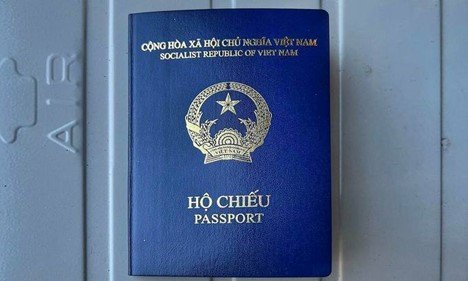




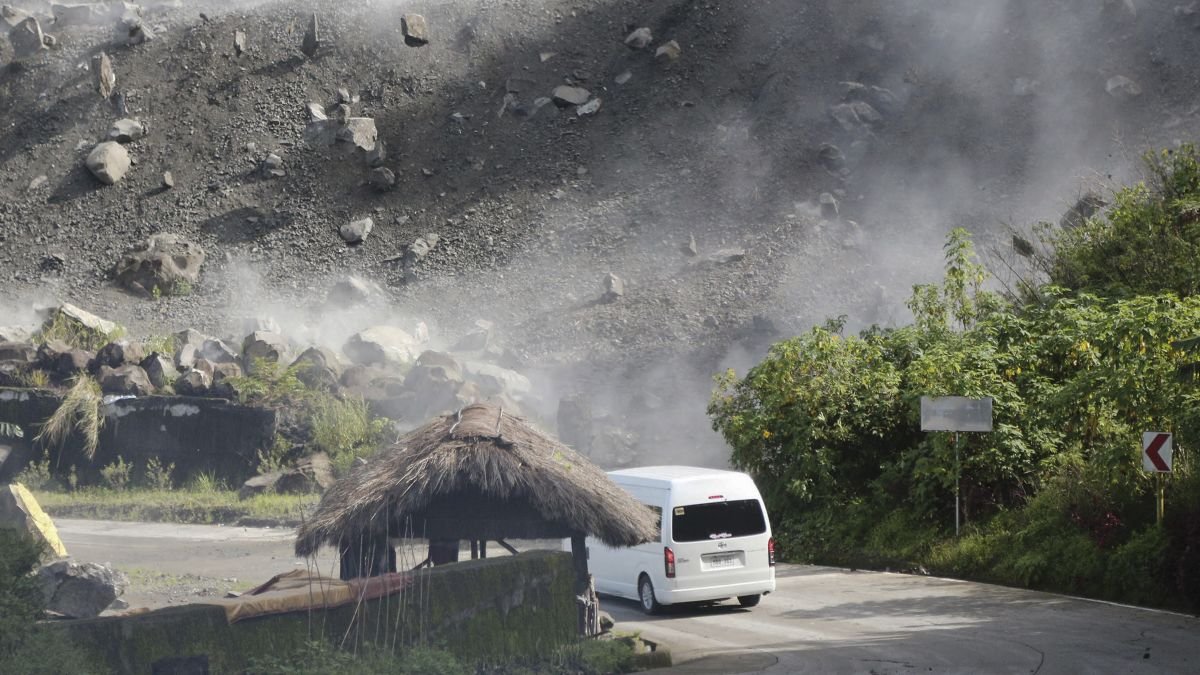


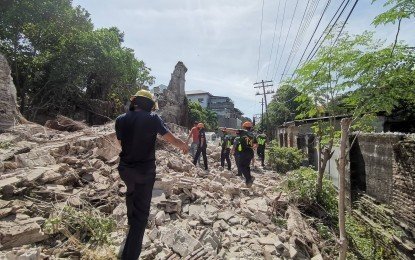



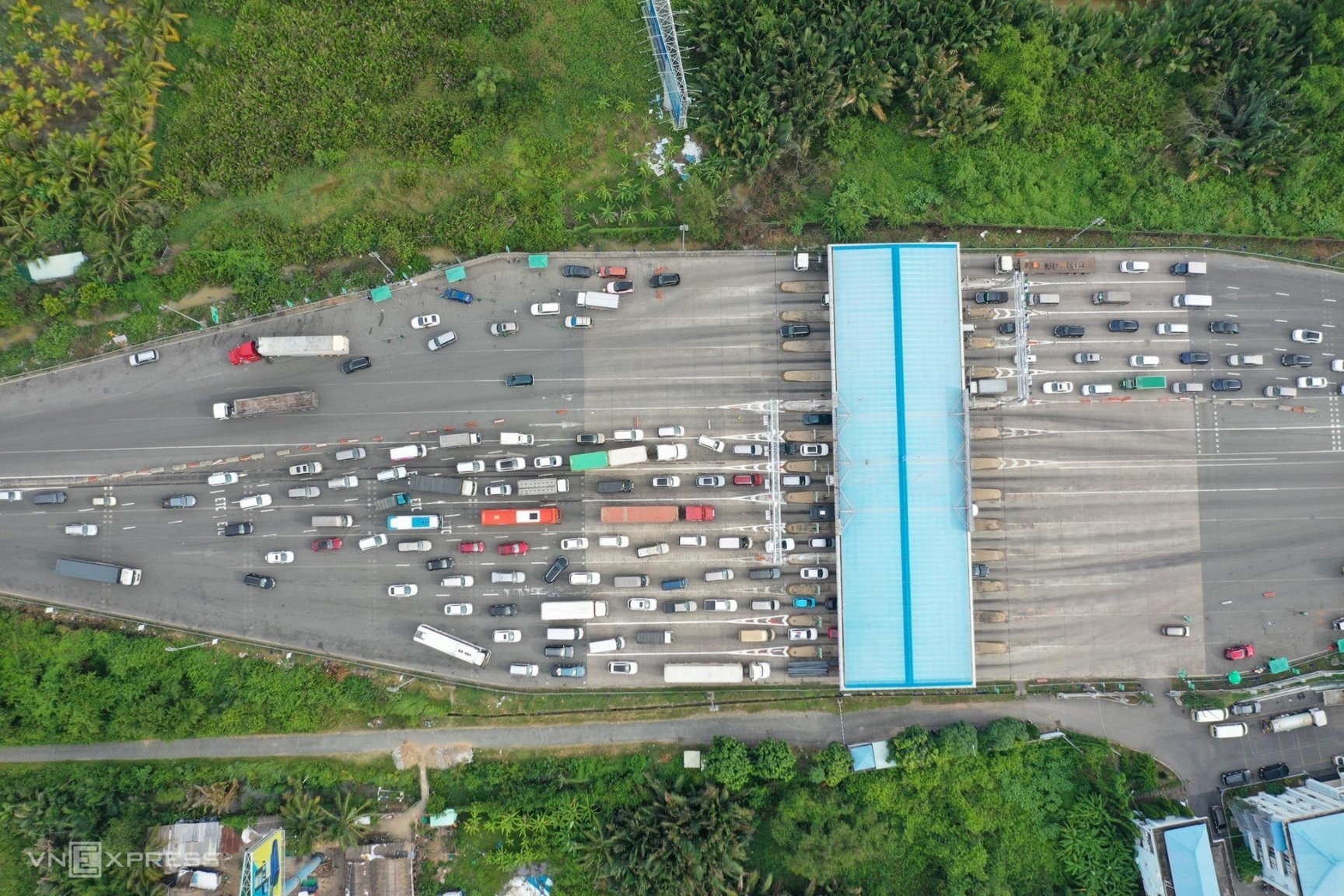

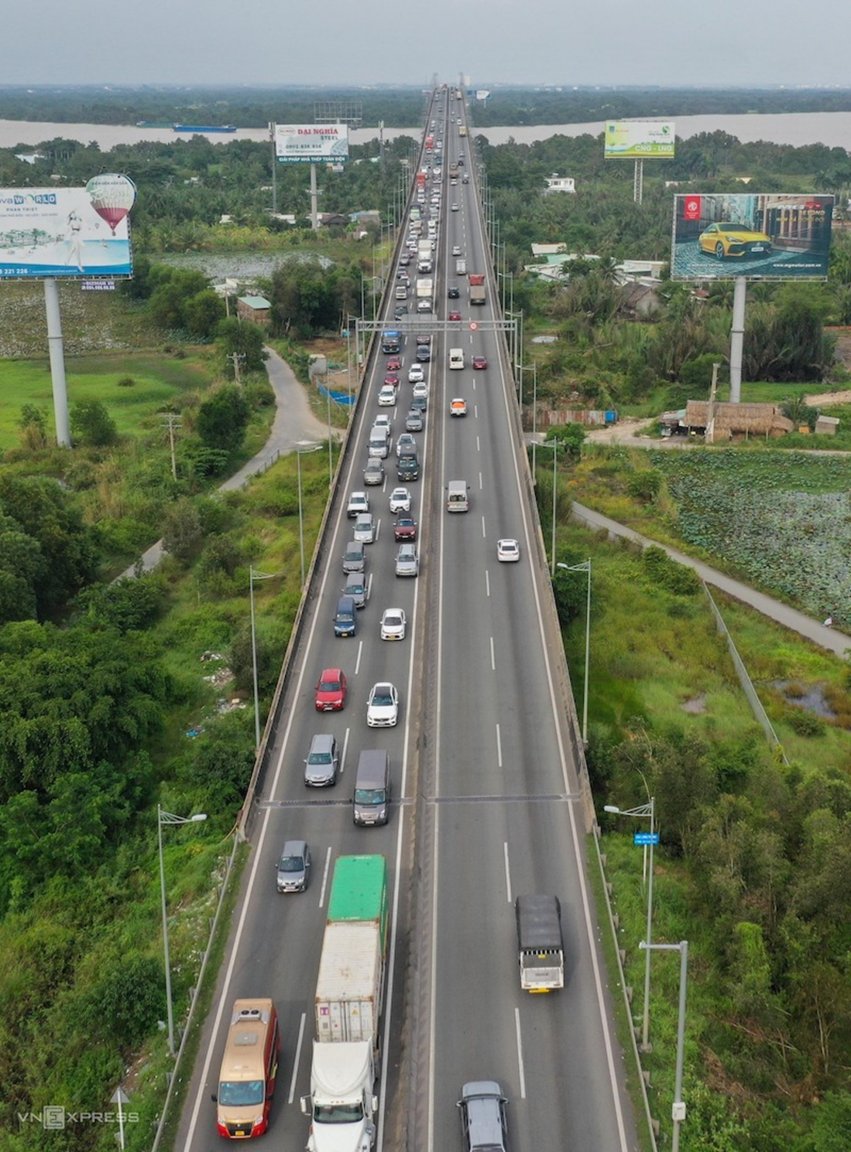


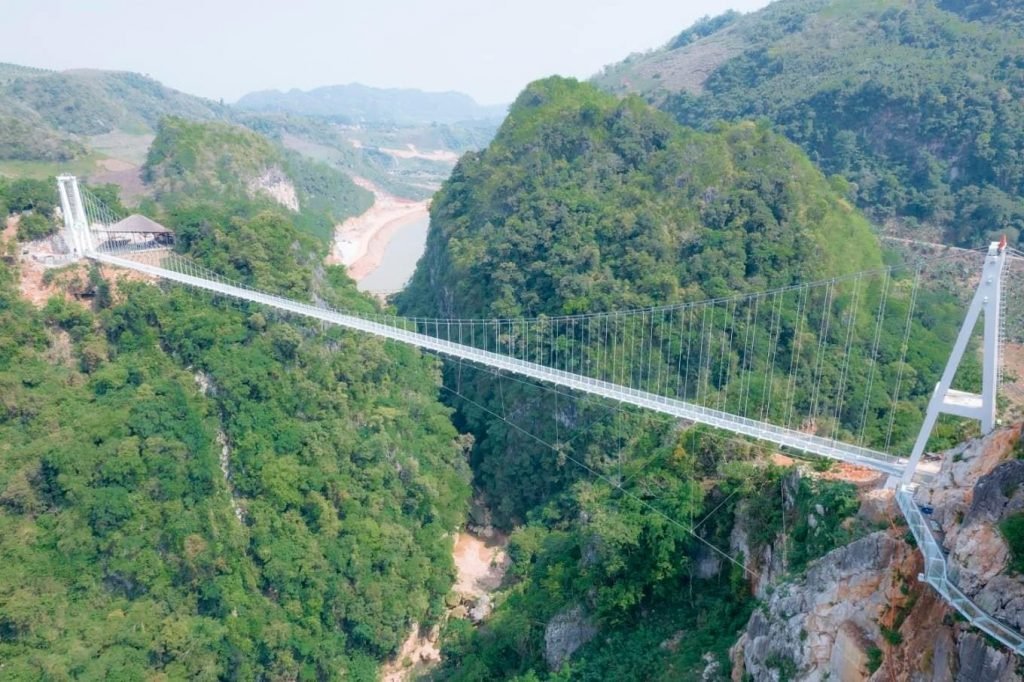






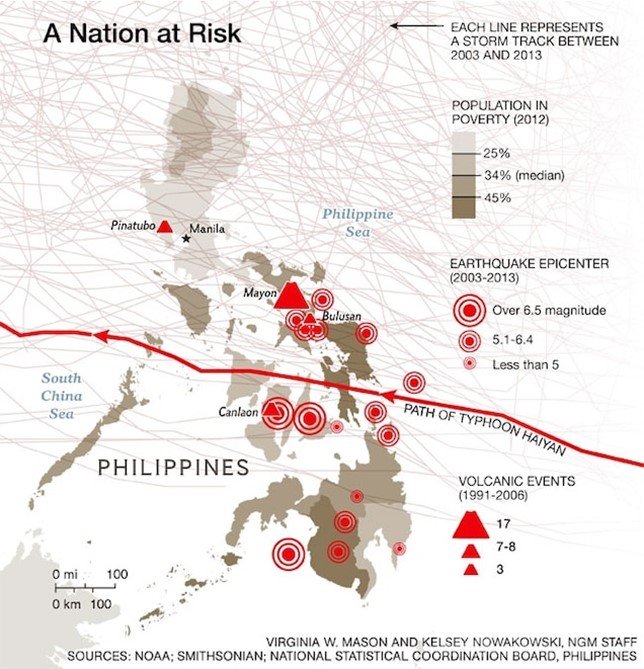
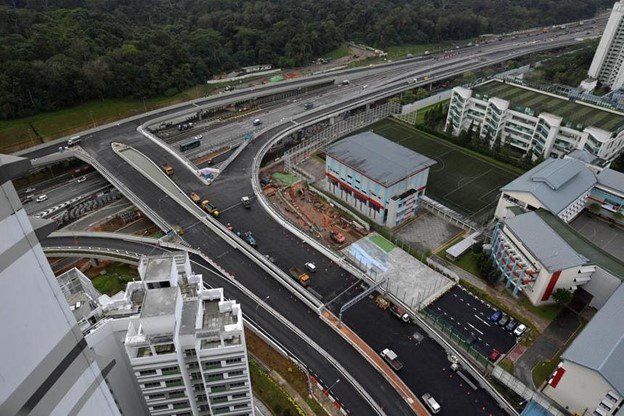

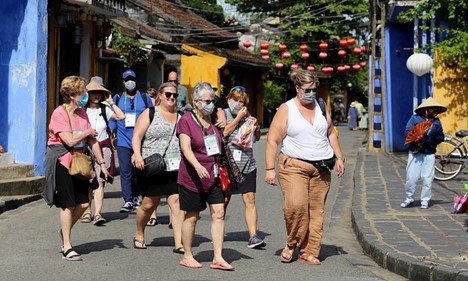
Do you think you could break a Guinness World Record?
in Vietnam General Chat
Posted
To become a record-holder requires determination, extraordinary skills and commitment.
Lee Redmond holds the record for the longest fingernails ever
Before applying for an existing record, you will need to check the current information and make sure you’ve got what it takes to break the record.
If you are suggesting a new record idea, they recommend that you spend some time searching their current records to see what may already have been achieved in your area of expertise.
Every newly approved record idea has to be significantly different from existing records and demonstrate a completely new skill.
Being the first to suggest a record does not immediately qualify for acceptance, with around 60% of applications for new records being rejected.
However, they are always looking for new exciting ideas to reflect the world’s diversity.
Check the What makes a GUINNESS WORLD RECORDS record title page and familiarise yourself with our record breaking criteria and policies.
Each record title must fulfil all of the following criteria. They must be:
Measurable – Can it be measured objectively? What is the unit of measurement? We do not accept applications based on subjective variables. For example - beauty, kindness, loyalty.
Breakable – Can the record be broken? Our record titles must be open to being challenged.
Standardisable - Can the record be repeated by someone else? Is it possible to create a set of parameters and conditions that all challengers can follow?
Verifiable - Can the claim be proven? Will there be accurate evidence available to prove it occurred?
Based on one variable - Is the record based on one superlative and measured in one unit of measurement?
The best in the world - Has anyone else done better? If your record suggestion is new then Guinness World Records will set a challenging minimum requirement for you to beat.
Invite an adjudicator
There's nothing quite like the presence of an Official Guinness World Records Judge to create a sense of prestige, attract media and enhance the emotional connection between your brand and audience.
Is applying for Guinness World record free?
All existing record titles (those already in our records database) are free of charge through the standard application process. If you want to apply for a new record title (something that you cannot find in our database), a non-refundable administration fee of £5/$5 (plus VAT) applies.
1. Register for an account
2. You will receive an email with an activation link. Click on the link, and you will be brought to a dashboard page.
3. Click on the green ‘Apply for a record’ button.
4. Search for the record that you want to break.
5. When you find the record, click the ‘Apply Now’ button. If you cannot find the record you can apply for a new one by clicking ‘Apply for a new record title’ at the bottom of the page.
6. Complete the application form.
Maybe you too could become a new Guinness World Record holder as well.
Join our 3 x a week Vietnam News, Travel and Expat information newsletter and keep up to date. https://aseannow.com/newsletter.php